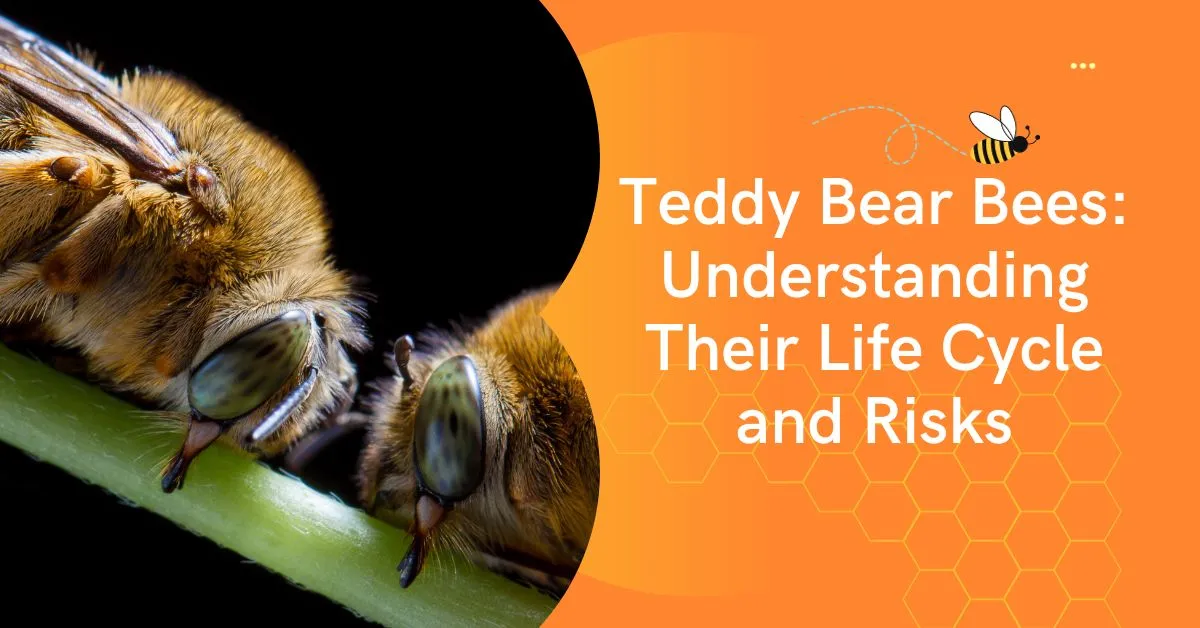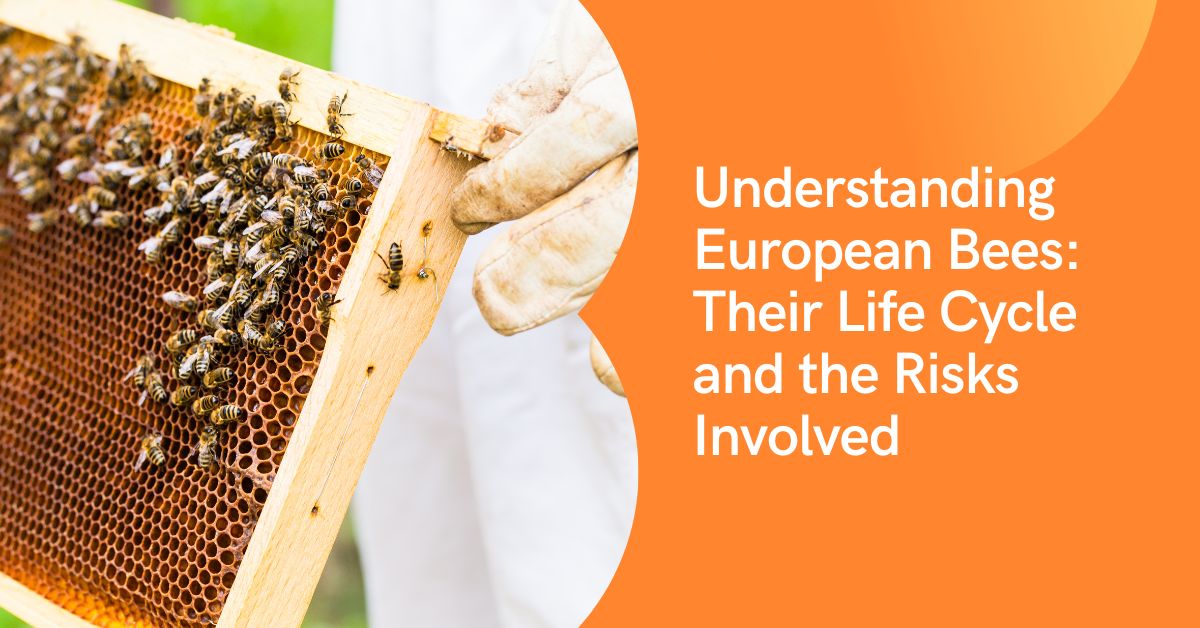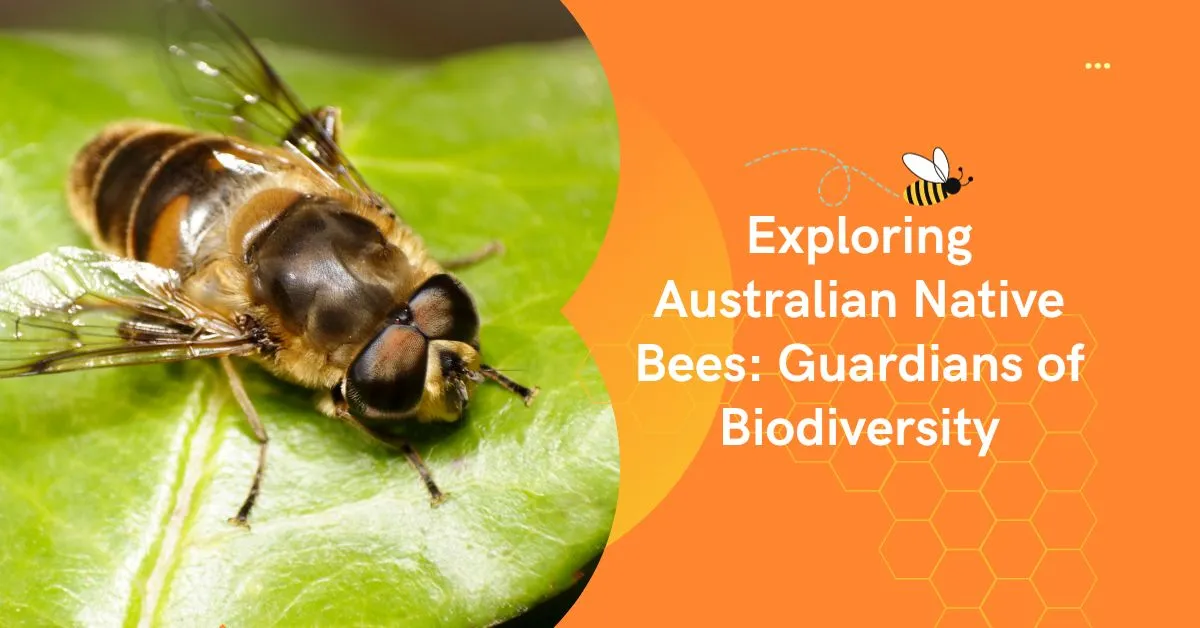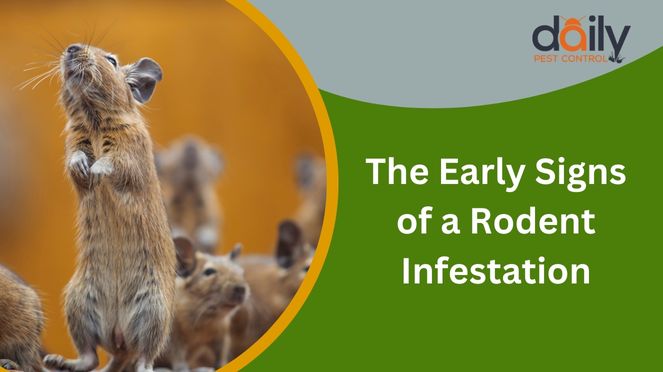Blue-banded bees are a group of solitary native bees that belong to the genus Amegilla. They are named for their striking blue and black striped abdomens, which set them apart from other bee species. Blue-banded bees are important pollinators of a wide range of flowering plants. They use a unique buzzing technique called “buzz pollination” to release pollen from certain flowers, such as tomatoes, eggplants, and blueberries. This involves vibrating their flight muscles while attached to the flower, which causes the pollen to be dislodged and collected by the bee. This technique makes them particularly efficient pollinators for these types of plants.
Blue-banded bee nests are typically constructed in sandy or soft soil, with multiple brood cells containing pollen and nectar, where the female lays a single egg in each cell. Blue-banded bees play a valuable role in ecosystems and can be beneficial for agriculture, making their conservation important for maintaining healthy ecosystems and sustainable crop production.
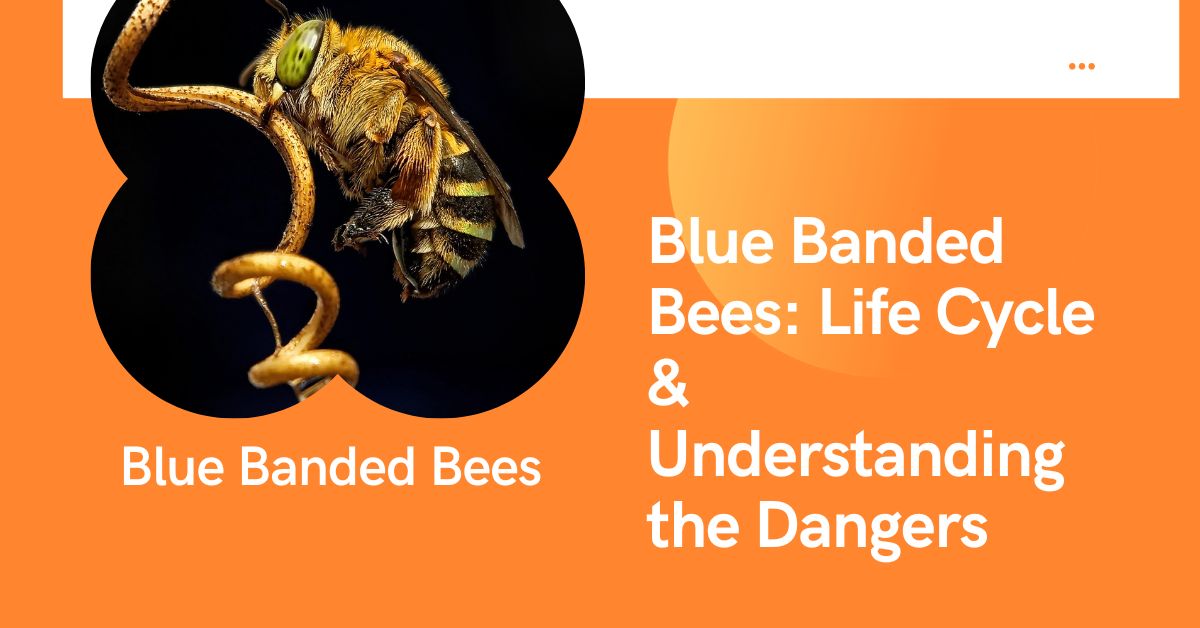
Importance of Blue-Banded Bees in the Ecosystem
Blue-banded bees play a vital role in ecosystems due to their unique characteristics and behavior. Here are some key aspects of their importance in the ecosystem:
Pollination: Blue-banded bees are efficient pollinators, especially for plants that require buzz pollination. They visit a wide variety of flowers to collect nectar and pollen for their offspring, inadvertently transferring pollen from one flower to another. This pollination service is crucial for the reproduction of many plant species, including both wildflowers and agricultural crops.
Biodiversity: By pollinating diverse plant species, blue-banded bees contribute to the maintenance of biodiversity in ecosystems. Many plants rely on specific pollinators like these bees to reproduce, and the loss of such pollinators could lead to declines in plant populations and disruptions in the food web.
Crop Production: Blue-banded bees can benefit agriculture by pollinating crops such as tomatoes, eggplants, and blueberries, which require buzz pollination for efficient pollen release. Their contribution to crop pollination helps ensure higher yields and quality in these agricultural products.
Ecosystem Health: The presence of blue-banded bees can be an indicator of ecosystem health. Their ability to thrive in various environments is a sign of the availability of suitable forage plants and a relatively stable ecosystem. The health of blue-banded bee populations reflects the overall health of the ecosystem.
Genetic Diversity: Blue-banded bees, like other pollinators, aid in the genetic diversity of plant populations. By facilitating cross-pollination among different individuals, they help create new genetic combinations, which can be essential for the adaptation and evolution of plant species.
Seed Production: Many plants depend on pollinators for the production of seeds. Blue-banded bees’ role in pollination contributes to the formation of seeds that can be essential for the survival and spread of plant species.
Physical Characteristics of Blue-Banded Bees
Blue-banded bees (genus Amegilla) are known for their distinctive physical characteristics, which help distinguish them from other bee species. Here are the key physical traits of these bees:
Blue and Black Abdomen: The most recognizable feature of blue-banded bees is their abdomen. They have striking blue and black bands on their abdomens, which give them their name. These bands can vary in color intensity, but they typically consist of alternating segments of metallic blue and black.
Body Size: Blue-banded bees are generally medium-sized, with a body length ranging from about 8 to 14 millimeters. Their size may vary slightly depending on the species and region.
Hairy Body: Like many bee species, blue-banded bees have a hairy body. These fine hairs cover their entire body and serve various purposes, including collecting and distributing pollen as they visit flowers.
Thorax: The thorax of blue-banded bees is often covered in dense, pale hairs, which contrast with their predominantly dark-colored abdomen. The thorax contains the flight muscles necessary for their buzzing flight pattern.
Facial Characteristics: Blue-banded bees have distinct facial features, including large, well-developed compound eyes that are important for locating and recognizing flowers. They also have two prominent antennae that they use for sensory perception.
Wings: Their wings are transparent and somewhat long in proportion to their body size, which aids in their agile and efficient flight.
Mandibles: Blue-banded bees possess mandibles, which are structures near their mouthparts that are used for a variety of tasks, including collecting building materials for nests and manipulating floral structures.
Stinger: Like other bees, blue-banded bees have a stinger. However, they are generally not aggressive and are not prone to stinging unless they feel directly threatened. Their stingers are used primarily for self-defense.
What are the Threats and Dangers of Blue-Banded Bees?
Blue-banded bees, like many other bee species, face various threats and dangers that can impact their populations and overall well-being. Some of the primary threats and dangers to blue-banded bees include:
Habitat Loss: One of the most significant threats to blue-banded bees is habitat loss and degradation. Urbanization, agriculture, and land development can result in the destruction of natural habitats where these bees forage for nectar and pollen and build their nests.
Pesticide Exposure: Blue-banded bees, like other pollinators, can be exposed to pesticides when foraging on crops treated with chemicals. Pesticides can have toxic effects on bees, including reduced foraging ability, impaired navigation, and increased susceptibility to diseases.
Climate Change: Changes in climate patterns can affect the availability and timing of flowering plants, potentially leading to a mismatch between the emergence of blue-banded bees and the flowering of their preferred food sources.
Competition with Introduced Species: In some regions, blue-banded bees may face competition with introduced bee species for floral resources. This competition can limit the availability of nectar and pollen for native bees.
Parasites and Diseases: Blue-banded bees can be susceptible to various parasites and diseases, such as mites and pathogens. These can weaken bee colonies and reduce their overall health and reproductive success.
Nest Destruction: Human activities, including digging and construction, can inadvertently destroy blue-banded bee nests, which are often located in soft or sandy soils. Disturbance of nesting sites can lead to a decline in bee populations.
How to Treat Blue-Banded Bees Stings?
Stay Calm: While a bee sting can be painful, it’s important to stay calm. Most bee stings cause localized pain and discomfort, but severe allergic reactions are rare.
Remove the Sting: Blue-banded bees, like honeybees, have barbed stingers. It’s crucial to remove the stinger as soon as possible to prevent more venom from being injected. You can use a fingernail, credit card, or a clean, blunt-edged object to scrape or flick it out. Avoid using tweezers, as they can squeeze more venom into the wound.
Wash the Area: After removing the stinger, wash the affected area with soap and water to reduce the risk of infection. Pat it dry with a clean cloth.
Pain Relief: Over-the-counter pain relievers like ibuprofen or acetaminophen can be taken to alleviate pain and discomfort. Follow the dosing instructions on the product label.
Elevate the Area: If the sting is on an extremity (such as a hand or foot), elevating it can help reduce swelling.
Avoid Scratching: While the sting site may itch, avoid scratching, as it can increase the risk of infection.
Watch for Allergic Reactions: In rare cases, some individuals may have severe allergic reactions to bee stings. If you experience symptoms such as difficulty breathing, swelling of the face or throat, rapid heartbeat, dizziness, or nausea, seek immediate medical attention. These are signs of anaphylaxis, a potentially life-threatening condition.
Seek Medical Help:
If you have a known severe allergy to bee stings or if you experience a more severe reaction, even if it’s not anaphylaxis, it’s important to seek a pest control Brisbane expert’s help.
Faqs for Blue-Banded Bees
Q. What should I do if I get stung by a bee?
A. If you get stung by a bee, it’s important to stay calm, remove the stinger, wash the area with soap and water, and apply a cold compress to reduce pain and swelling. You can also take over-the-counter pain relievers if needed.
Q. Are blue-banded bees more or less likely to sting than other bees?
A. Blue-banded bees are generally less likely to sting than honeybees or wasps. They are not aggressive and will usually only sting if they feel directly threatened.
Q. What are the signs of an allergic reaction to a bee sting?
A. Signs of an allergic reaction to a bee sting may include difficulty breathing, swelling of the face or throat, rapid heartbeat, dizziness, or nausea. These are signs of anaphylaxis, a severe and potentially life-threatening condition.
Q. Are bee stings dangerous for children or the elderly?
A. Bee stings can be uncomfortable for anyone, but they are generally not more dangerous for children or the elderly than for adults. However, it’s important to monitor them for any signs of an allergic reaction.




